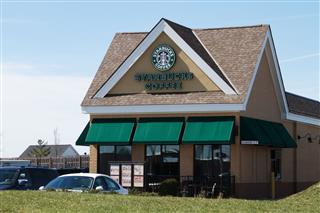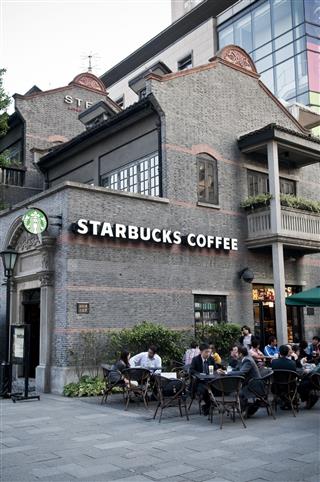
When it comes to marketing your product, brand awareness is a major component. For consumers, brand familiarity is trust, but how do you gain their trust if you are a corporate business, producing multiple products? This MarketingWit write-up will brief you about the meaning of umbrella branding with examples along with its pros and cons.
Corporate Umbrella branding refers to a strategy wherein an organization utilizes the company’s credibility while launching new products or services, as this lends brand recognition to various sub-brands. Consumers may not be in a position to recognize the sub-brands, but they will definitely recognize the corporate umbrella brand. Companies like Starbucks, Virgin, and Google are examples of umbrella branding
When we were kids, our parents drilled into us the approach of “not to trust a stranger”. This approach somehow gets ingrained in us so deeply that it begins to encroach on other spheres of our lives too. For instance, when we go shopping and are confronted by a new product, which may look appealing and pocket-friendly but has that stranger tag, we tend to ignore it and opt for the more familiar stuff. Example: If you always buy Orbit gum, and one day, you a different brand, for example, Freshers which is comparatively cheaper, you still prefer buying Orbit because it is familiar and a known quantity, whereas the other brand, ‘Freshers’, is relatively unknown.
Therefore, brand awareness is an important element in any successful marketing strategy. Creating brand awareness for a new product is a very tedious task, not to forget, the expenses company has to invest to promote the brand. The most important thing in any market is brand recognition, if people are familiar, and, they trust your brand that gives your product/organization some credibility. Also, it becomes easier to launch a new product, or, a service. This is where umbrella branding comes in the picture.
Also known as family branding is a marketing strategy, wherein a firm uses its brand name for three or more products, but this certainly does not mean that the firm’s full product portfolio will fall under one brand name. The said products will share the same means of identification, which includes:Logos, Symbols, Brand name. It is used for a number of related but distinct products, difference can be in the form of their use, their color, their fragrance, or their price. The main purpose behind this type of branding is to enhance an organization’s marketability of all its products under one brand name.
Umbrella Branding
► An umbrella brand already has reputation in the market, consumers are fairly familiar with that brand, plus they can vouch for their quality. This makes it easy for any organization to launch a new product, and gain benefits due to previous marketing efforts. That means, the new product makes an inexpensive entry in the market.
► Since all the products under the umbrella brand are interdependent on each other, one product’s success provides a boost to other products. Let us suppose that a firm has an umbrella brand which sells clothes washing powder, washing soaps, washing conditioners. If their washing soap earns good reviews, people are more likely to try other products from that firm under the same umbrella brand.
► Another advantage of umbrella branding is that instead of investing in various campaigns for different products, a firm can focus its entire energy and resources in promoting one single brand. This saves time and money, besides increases their efficiency.
► If a company has excess funds and wants to promote a single product, they can do so because umbrella branding permits it to remain flexible to run several small campaigns for its products. Example: If an organization has 5 products under one brand name, it can rightfully promote its umbrella brand name, while simultaneously advertising its products.
► Because of the umbrella brand’s reputation, its quality, consumers are ready to pay premium prices for the product. Why? Because, they feel certain loyalty towards the brand, and the benefits they derive after using it. This in turn, increases the firm’s image, plus the revenue they generate is quite substantial.
► Due to umbrella branding, it becomes fairly easy to manage all the products under one single brand name. It eliminates the hassle of having to invent new logos, slogans, advertising jingles.
► Economies of scale can be achieved, since the firm can benefit from promoting one single brand name. This saves cost on advertising, patents, promotion, etc. The brand does not have to invest for every individual product, plus the profit can be dispersed equally, which also benefits other products under the brand.
► Customer recall is a very helpful aid, when it comes to planning any marketing policy. Suppose a company has launched 10 new products under different brand names, it will be very difficult for consumers to remember each and every individual product name. Introducing a product under one brand name will help consumers to recall that product.
► The already established brand name gives easy positioning to the product in a highly competitive market. A new product is easily recognizable by consumers due to the strong brand name, and the product has ready a market setup.
► Umbrella brands are in a sound position to partner with other umbrella brands. Apart from the goods industry, even service industry benefits from this type of branding. People generally prefer working with famous brands, so they use this to their advantage to hire specialized employees.
► An organization however large or small cannot provide the same quality for all its products. So, there are chances where the quality of certain products may fluctuate. A company that is focusing on one product, may sometimes neglect other.
► It also depends on how strong the current brand name is in the market. If it’s not that great, then certainly, umbrella strategy won’t be beneficial for that firm’s other products.
► Umbrella branding works for products which has some logical connection. For example, Starbucks plans to brand coffee-related snacks or beverages, this makes sense, but on the other hand, it won’t sound logical if they plan to brand desktops, laptops, and tablets. Consumer won’t be able to relate to the product, because they perceive Starbucks to be a coffee-related industry.
► This is a major drawback of umbrella branding, even if one of the products under the umbrella brand is poor or of average quality, it impacts the other products in the same brand. People may stop purchasing products of that brand.
► Major brand perception matters, if the brand is famous and has a good name, only then customers will be induced to buy that product. However, if the brand is not celebrated, customers won’t even give those products a second glance.
► Size also matters, if the organization is small with a limited array of products, then it will be beneficial to undertake this type of branding. But, if it is a large organization plus a large market to serve, then experts advise that the products be given a different name and look.
► If any of the products fails to work in the market, it can affect the progress of other products as well, thereby pruning their growth and sales.
► When an organization extends its products under a product line, cannibalization can take place, which can affect other products’ sales in the market, which curtails investment in product creation.
► One negative experience can change things; similarly, if a consumer has a bad experience with any of the products, he/she will refrain from buying a different product from the same brand.
► Suppose the said product under umbrella branding doesn’t yield any revenue, company may try to re-launch the product under a new brand name; however, it becomes really difficult to create a new brand image for an old product. All the products will be recognized with that same brand name, creating a distinct brand identity becomes hard.
✱ A company uses the same logo, name, marketing strategy for products it sells under umbrella branding.
✱ A company may use a different logo, name, marketing strategy for every single product it produces.
✱ Umbrella branding opts to advertise and promote all the products in the same manner.
✱ It allows the company to sell its product to different regions, and promote products in a different way than other products.
✱ The introduction of a new product becomes easier in umbrella branding due to past marketing campaigns of the brand.
✱ Introducing a new product can be a difficult process in individual branding as a company has to start its marketing promotion from scratch.
P&G
- Tide
- Head & Shoulders
- Gillette
- Pampers
- Crest Toothpaste
Unilever
-
Dove Shampoo
-
Dove Soap
-
Dove Deodrants
-
Dove Conditioner
-
Dove Cream
Nivea
-
Nivea Cream
-
Nivea Lip Balm
-
Nivea Body Lotion
-
Nivea Skin Firming Lotion
-
Nivea Sunscreen Lotion
Umbrella Branding In India
There are various companies in India that undertake umbrella branding strategy for their products. Here is a list of four major companies following umbrella branding.
Amul
-
Amul Butter
-
Amul Cheese
-
Amul Chocolate
-
Amul Ice cream
-
Amul Honey
Johnsons
-
Johnsons Baby Powder
-
Johnsons Baby Shampoo
-
Johnsons Baby Soap
-
Johnsons Baby Cream
-
Johnsons Baby Wipes
Videocon
-
Videocon Phone
-
Videocon Television
-
Videocon Refrigerator
-
Videocon Washing Machine
-
Videocon Air-Conditioner
Godrej
-
Godrej Hair Dye
-
Godrej Soap
-
Godrej Deodrant
-
Godrej Microwave Oven
-
Godrej Washing Machine
Back To Top
Umbrella branding can be effective if a consumer uses information from the promotion of one product to draw conclusions about another product within the same umbrella brand. But this has its drawback too, because the consumer might draw a negative conclusion about the product and the brand itself.


